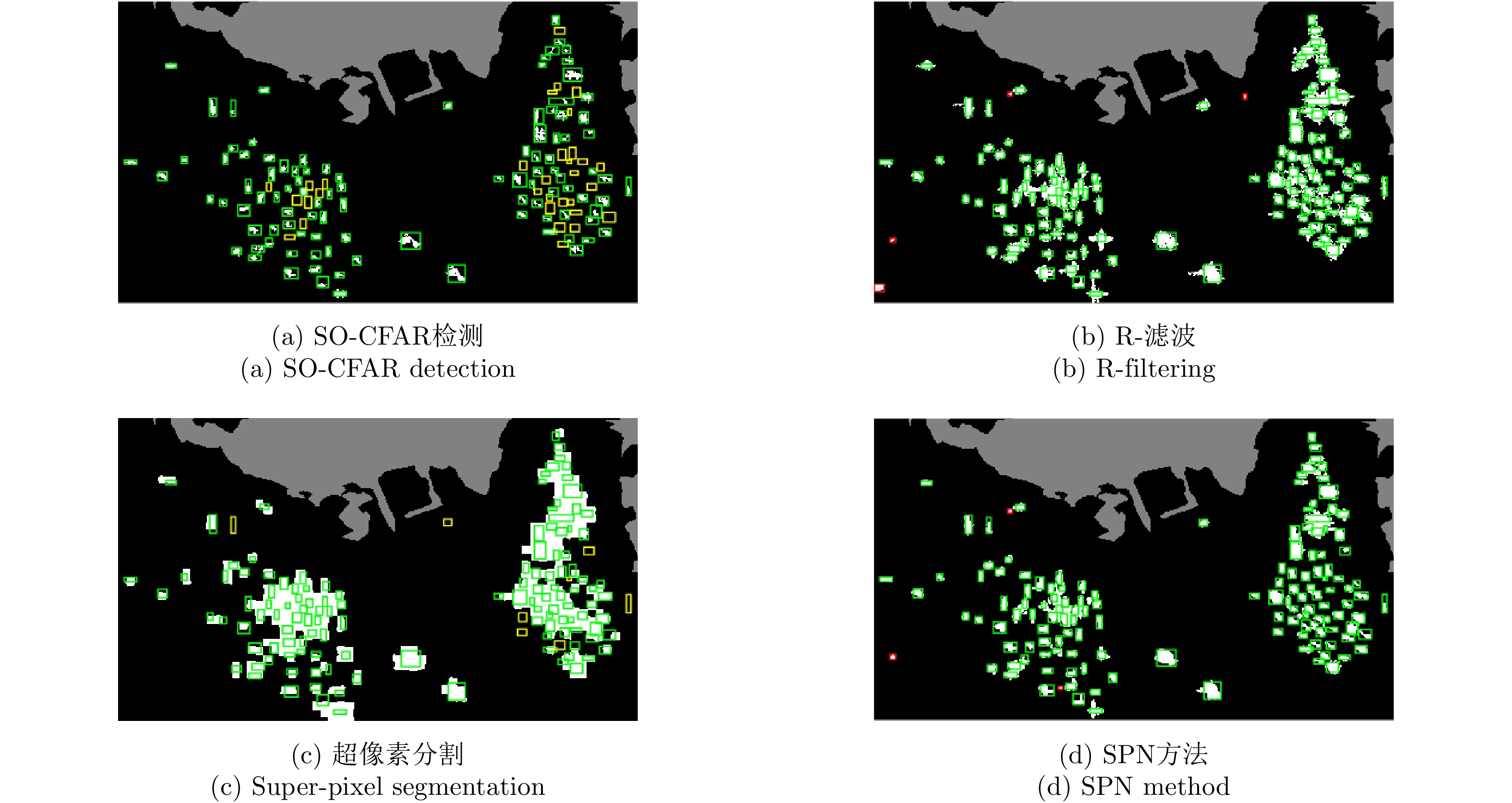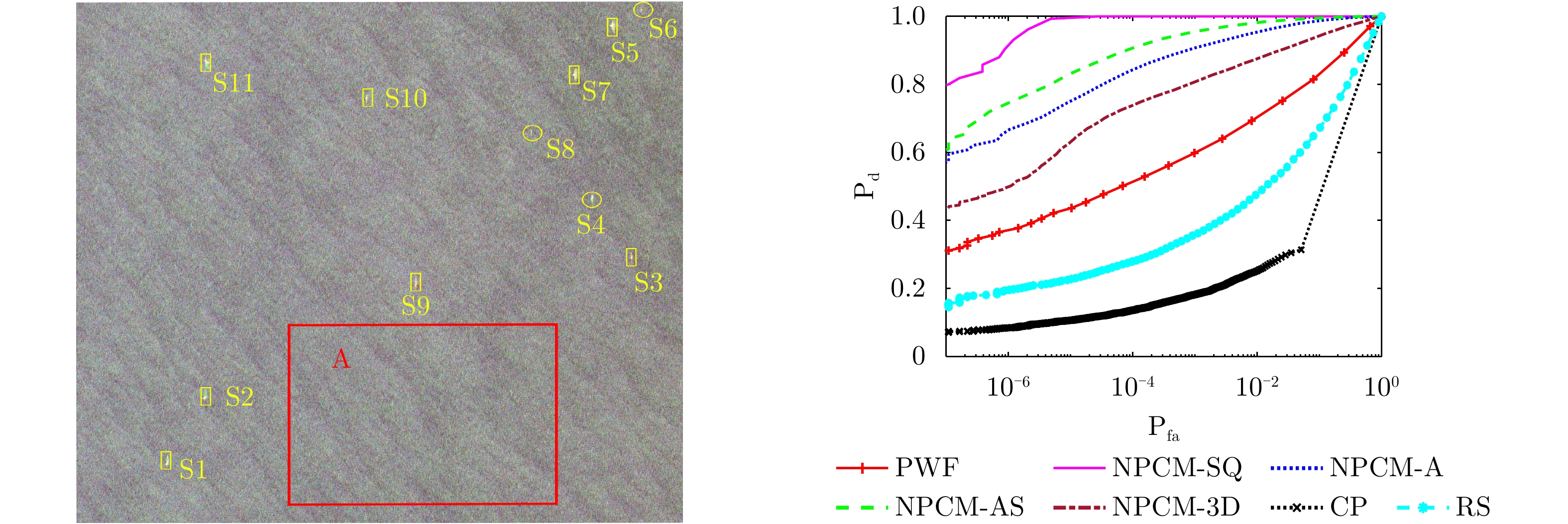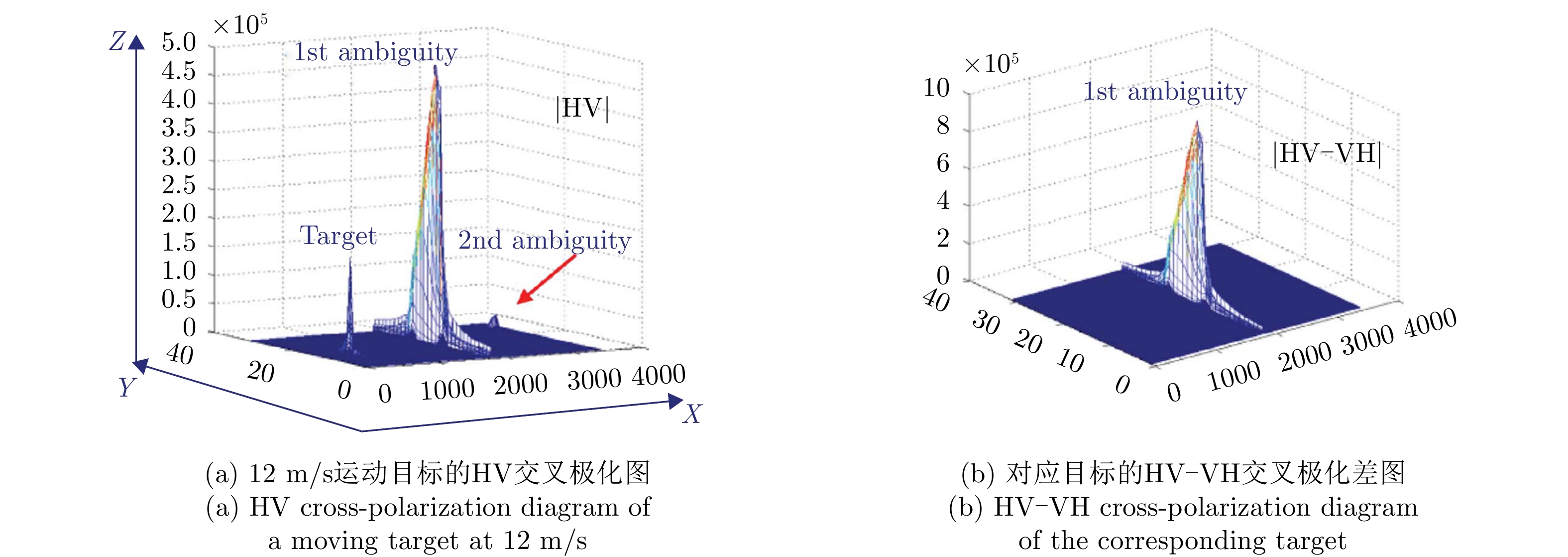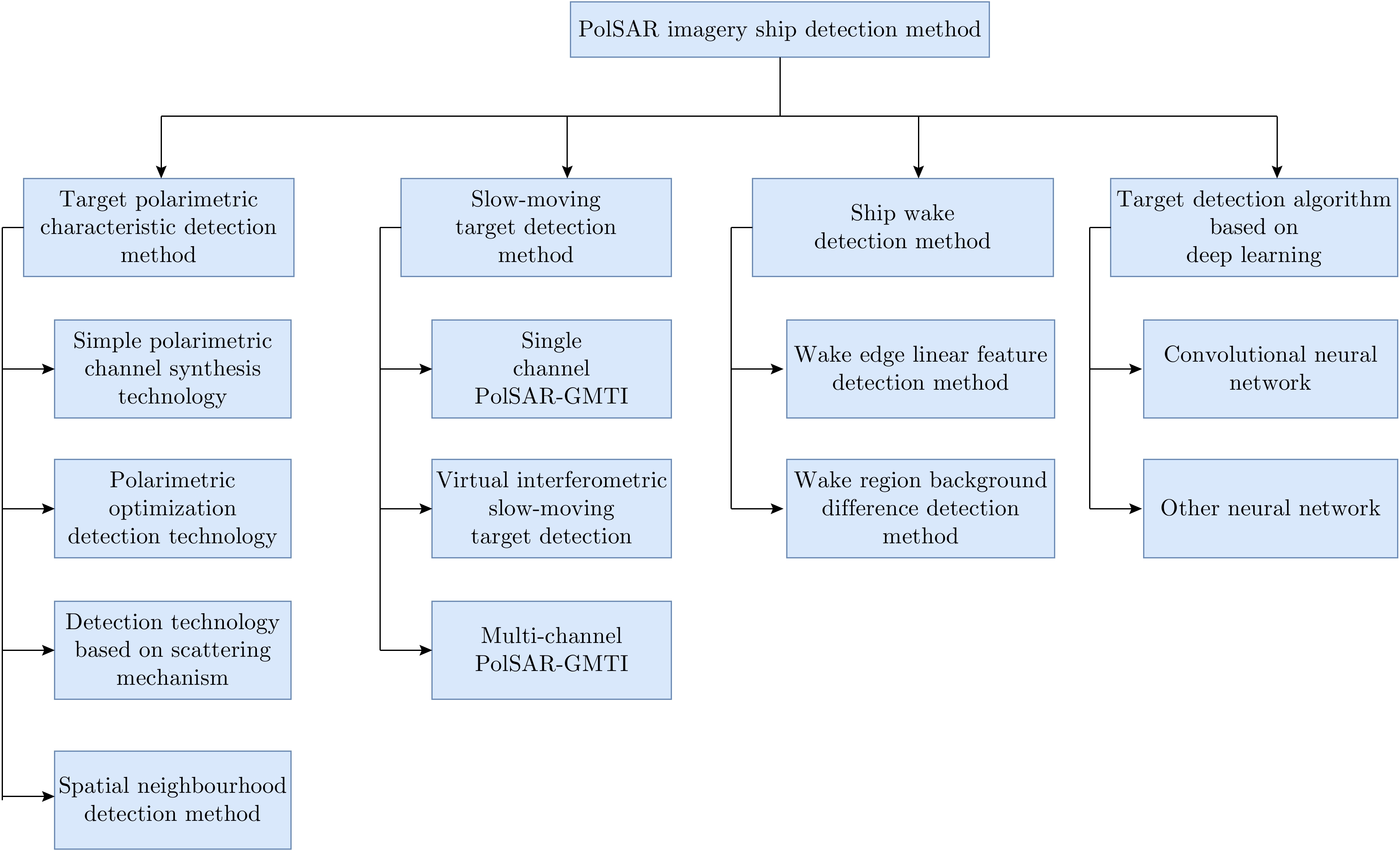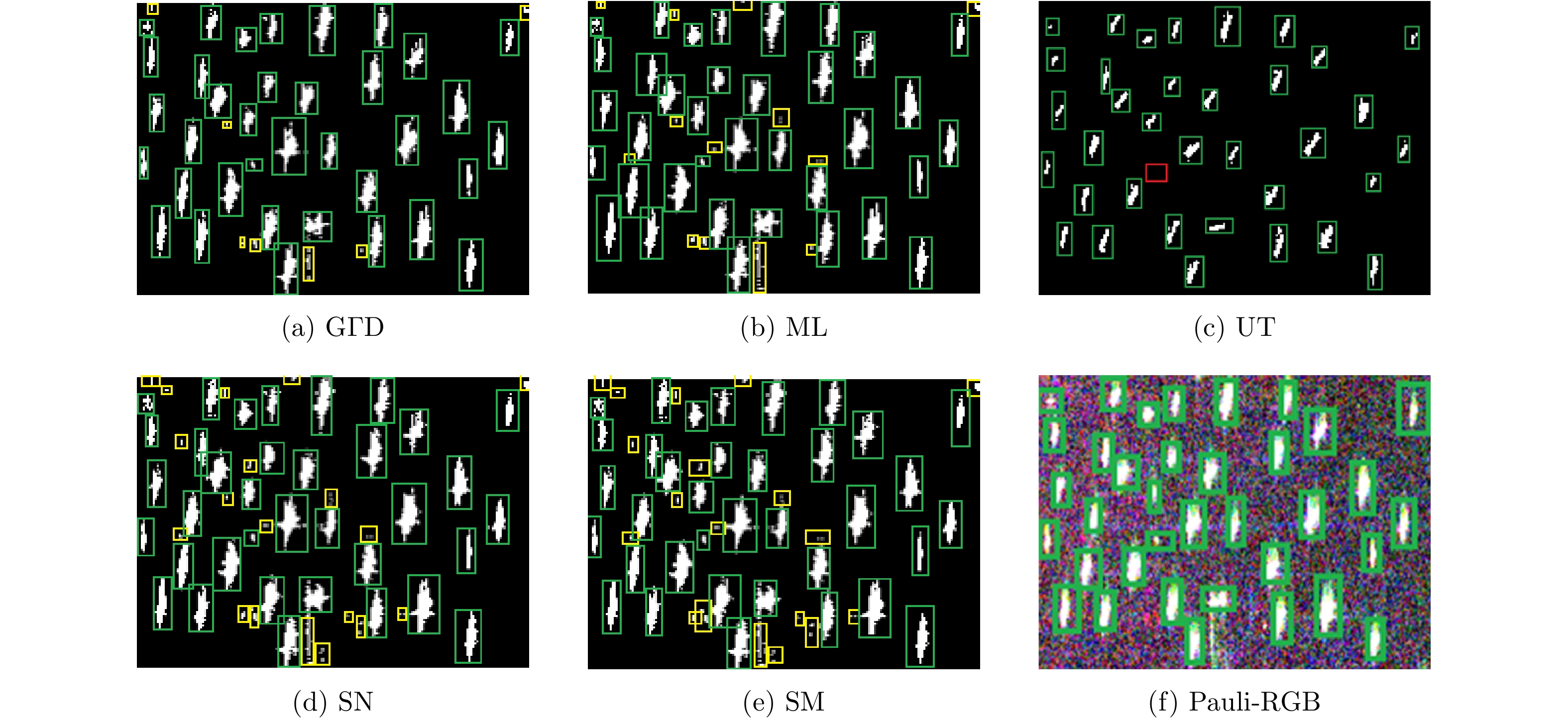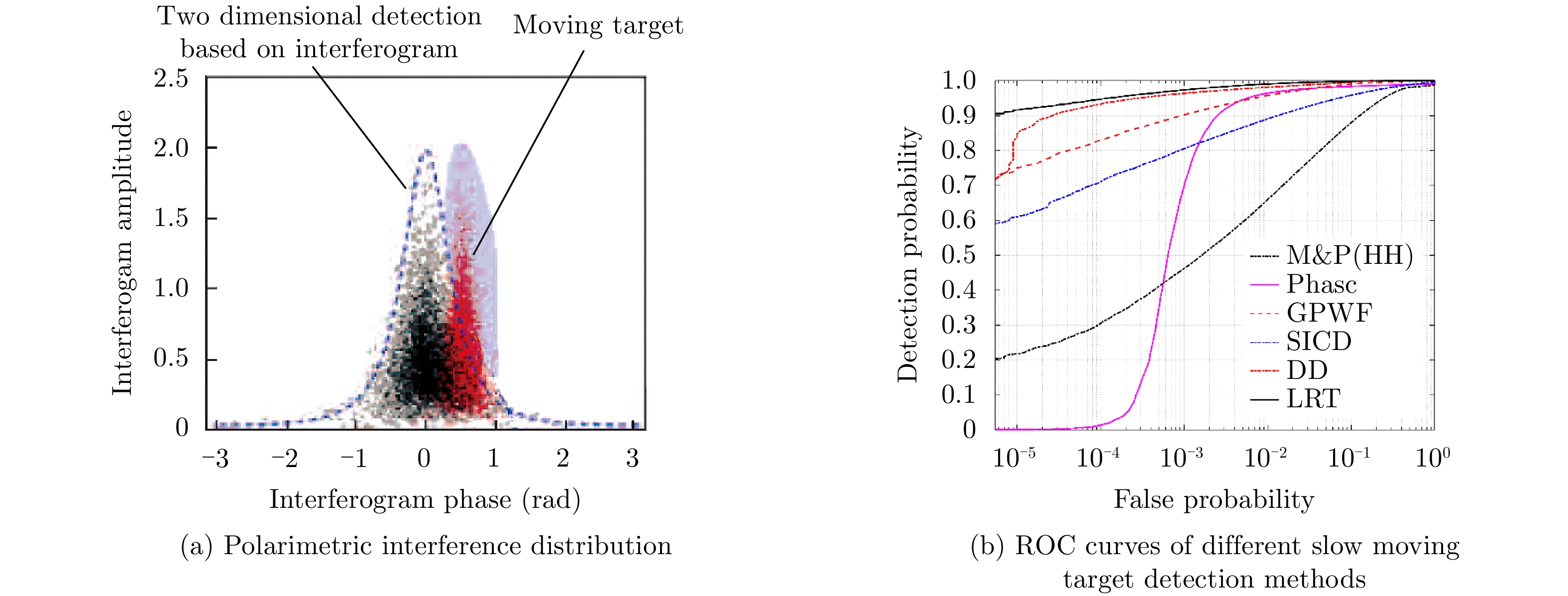| [1] |
CRISP D J. The state-of-the-art in ship detection in synthetic aperture radar imagery[R]. DSTO-RR-0272, 2004.
|
| [2] |
RANSON K J and SUN Guoqing. An evaluation of AIRSAR and SIR-C/X-SAR images for mapping northern forest attributes in Maine, USA[J]. Remote Sensing of Environment, 1997, 59(2): 203–222. doi: 10.1016/S0034-4257(96)00154-X |
| [3] |
DAI Dahai, WANG Xuesong, and XIAO Shunping, et al. Development trend of PolSAR system and technology[J]. Radar Science and Technology, 2008, 6(1): 15–22. doi: 10.3969/j.issn.1672-2337.2008.01.003 |
| [4] |
匡纲要, 陈强, 蒋咏梅, 等. 极化合成孔径雷达基础理论及其应用[M]. 长沙: 国防科技大学出版社, 2011.
KUANG Gangyao, CHEN Qiang, JIANG Yongmei, et al. Polarimetric Synthetic Aperture Radar Basic Principles and Its Applications[M]. Changsha: University of Defense Science and Technology Press, 2011.
|
| [5] |
刘涛, 崔浩贵, 谢恺, 等. 极化合成孔径雷达图像解译技术[M]. 北京: 国防工业出版社, 2017.
LIU Tao, CUI Haogui, XIE Kai, et al. Interpretation Techniques in Polarimetic Synthetic Apture Radar Imagery[M]. Beijing: National Defense Industry Press, 2017.
|
| [6] |
MARINO A, CLOUDE S R, and WOODHOUSE I H. Detecting depolarized targets using a new geometrical perturbation filter[J]. IEEE Transactions on Geoscience and Remote Sensing, 2012, 50(10): 3787–3799. doi: 10.1109/TGRS.2012.2185703 |
| [7] |
LIU Tao, YANG Ziyuan, MARINO A, et al. PolSAR ship detection based on neighborhood polarimetric covariance matrix[J]. IEEE Transactions on Geoscience and Remote Sensing, 2020, in press. doi: 10.1109/TGRS.2020.3022181 |
| [8] |
LIU Tao, YANG Ziyuan, ZHANG Tao, et al. A new form of the polarimetric notch filter[J]. IEEE Geoscience and Remote Sensing Letters, 2020, in press. doi: 10.1109/LGRS.2020.3020052 |
| [9] |
SCIOTTI M, PASTINA D, and LOMBARDO P. Polarimetric detectors of extended targets for ship detection in SAR images[C]. IEEE 2001 International Geoscience and Remote Sensing Symposium Scanning the Present and Resolving the Future, Sydney, Australia, 2001.
|
| [10] |
ZHANG Peng, ZHANG Jiafeng, and LIU Tao. Contrastive analysis of the performances of radar multi-look polarimetric detectors[J]. Chinese Journal of Radio Science, 2017, 32(4): 416–426. doi: 10.13443/j.cjors.2017022401 |
| [11] |
BOERNER W M, KOSTINSKI A B, and JAMES B D. On the concept of the polarimetric matched filter in high resolution radar imaging: An alternative for speckle reduction[C]. International Geoscience and Remote Sensing Symposium, ‘Remote Sensing: Moving Toward the 21st Century’, Edinburgh, UK, 1988: 69–72.
|
| [12] |
NOVAK L M, SECHTIN M B, and CARDULLO M J. Studies of target detection algorithms that use polarimetric radar data[J]. IEEE Transactions on Aerospace and Electronic Systems, 1989, 25(2): 150–165. doi: 10.1109/7.18677 |
| [13] |
CHANEY R D, BUD M C, and NOVAK L M. On the performance of polarimetric target detection algorithms[J]. IEEE Aerospace and Electronic Systems Magazine, 1990, 5(11): 10–15. doi: 10.1109/62.63157 |
| [14] |
NOVAK L M and BURL M C. Optimal speckle reduction in polarimetric SAR imagery[J]. IEEE Transactions on Aerospace and Electronic Systems, 1990, 26(2): 293–305. doi: 10.1109/7.53442 |
| [15] |
YANG Jian, YAMAGUCHI Y, BOERNER W M, et al. Numerical methods for solving the optimal problem of contrast enhancement[J]. IEEE Transactions on Geoscience and Remote Sensing, 2000, 38(2): 965–971. doi: 10.1109/36.84197 |
| [16] |
YANG Dongwen, DU Lan, LIU Hongwei, et al. Novel polarimetric contrast enhancement method based on minimal clutter to signal ratio subspace[J]. IEEE Transactions on Geoscience and Remote Sensing, 2019, 57(11): 8570–8583. doi: 10.1109/TGRS.2019.2921629 |
| [17] |
NOVAK L M. Target detection studies using fully polarimetric data collected by the Lincoln Laboratory MMW SAR[C]. 92 International Conference on Radar, Brighton, UK, 1992.
|
| [18] |
LIU Tao, YANG Ziyuan, YANG Jian, et al. CFAR ship detection methods using compact polarimetric SAR in a K-Wishart distribution[J]. IEEE Journal of Selected Topics in Applied Earth Observations and Remote Sensing, 2019, 12(10): 3737–3745. doi: 10.1109/JSTARS.2019.2923009 |
| [19] |
LOPES A and SERY F. Optimal speckle reduction for the product model in multilook polarimetric SAR imagery and the Wishart distribution[J]. IEEE Transactions on Geoscience and Remote Sensing, 1997, 35(3): 632–647. doi: 10.1109/36.581979 |
| [20] |
LIU Guoqing, HUANG Shunji, TORRE A, et al. The multilook polarimetric whitening filter (MPWF) for intensity speckle reduction in polarimetric SAR images[J]. IEEE Transactions on Geoscience and Remote Sensing, 1998, 36(3): 1016–1020. doi: 10.1109/36.673694 |
| [21] |
LIU Tao, ZHANG Jiafeng, GAO Gui, et al. CFAR ship detection in polarimetric synthetic aperture radar images based on whitening filter[J]. IEEE Transactions on Geoscience and Remote Sensing, 2019, 58(1): 58–81. doi: 10.1109/TGRS.2019.2931353 |
| [22] |
GAO Gui, LI Gaosheng, and LI Yipeng. Shape parameter estimator of the generalized Gaussian distribution based on the MoLC[J]. IEEE Geoscience and Remote Sensing Letters, 2018, 15(3): 350–354. doi: 10.1109/LGRS.2017.2787558 |
| [23] |
GAO Gui, OUYANG Kewei, LUO Yongbo, et al. Scheme of parameter estimation for generalized gamma distribution and its application to ship detection in SAR images[J]. IEEE Transactions on Geoscience and Remote Sensing, 2017, 55(3): 1812–1832. doi: 10.1109/TGRS.2016.2634862 |
| [24] |
GAO Gui, LUO Yongbo, OUYANG Kewei, et al. Statistical modeling of PMA detector for ship detection in high-resolution dual-polarization SAR images[J]. IEEE Transactions on Geoscience and Remote Sensing, 2016, 54(7): 4302–4313. doi: 10.1109/TGRS.2016.2539200 |
| [25] |
GAO Gui, WANG Xiaoyang, and NIU Min. Statistical modeling of the reflection symmetry metric for sea clutter in dual-polarimetric SAR data[J]. IEEE Journal of Oceanic Engineering, 2016, 41(2): 339–345. doi: 10.1109/JOE.2015.2458231 |
| [26] |
冷祥光, 计科峰, 熊博莅, 等. 面向舰船目标检测的单通道复值SAR图像统计建模方法研究[J]. 雷达学报, 2020, 9(3): 477–496. doi: 10.12000/JR20070LENG Xiangguang, JI Kefeng, XIONG Boli, et al. Statistical modeling methods of single-channel complex-valued SAR images for ship detection[J]. Journal of Radars, 2020, 9(3): 477–496. doi: 10.12000/JR20070 |
| [27] |
TAO Ding, ANFINSEN S N, and BREKKE C. Robust CFAR detector based on truncated statistics in multiple-target situations[J]. IEEE Transactions on Geoscience and Remote Sensing, 2016, 54(1): 117–134. doi: 10.1109/TGRS.2015.2451311 |
| [28] |
LIU Tao, YANG Ziyuan, MARINO A, et al. Robust CFAR detector based on truncated statistics for polarimetric synthetic aperture radar[J]. IEEE Transactions on Geoscience and Remote Sensing, 2020, 58(9): 6731–6747. doi: 10.1109/TGRS.2020.2979252 |
| [29] |
LANG Haitao, XI Yuyang, and ZHANG Xi. Ship detection in high-resolution SAR images by clustering spatially enhanced pixel descriptor[J]. IEEE Transactions on Geoscience and Remote Sensing, 2019, 57(8): 5407–5423. doi: 10.1109/TGRS.2019.2899337 |
| [30] |
NUNZIATA F, MIGLIACCIO M, and BROWN C E. Reflection symmetry for polarimetric observation of man-made metallic targets at sea[J]. IEEE Journal of Oceanic Engineering, 2012, 37(3): 384–394. doi: 10.1109/JOE.2012.2198931 |
| [31] |
WANG Na, SHI Gongtao, LIU Li, et al. Polarimetric SAR target detection using the reflection symmetry[J]. IEEE Geoscience and Remote Sensing Letters, 2012, 9(6): 1104–1108. doi: 10.1109/LGRS.2012.2189548 |
| [32] |
MARINO A. A notch filter for ship detection with polarimetric SAR data[J]. IEEE Journal of Selected Topics in Applied Earth Observations and Remote Sensing, 2013, 6(3): 1219–1232. doi: 10.1109/JSTARS.2013.2247741 |
| [33] |
MARINO A and HAJNSEK I. Statistical tests for a ship detector based on the polarimetric notch filter[J]. IEEE Transactions on Geoscience and Remote Sensing, 2015, 53(8): 4578–4595. doi: 10.1109/TGRS.2015.2402312 |
| [34] |
GAO Gui and SHI Gongtao. CFAR ship detection in nonhomogeneous sea clutter using polarimetric SAR data based on the notch filter[J]. IEEE Transactions on Geoscience and Remote Sensing, 2017, 55(8): 4811–4824. doi: 10.1109/TGRS.2017.2701813 |
| [35] |
GAO Gui and SHI Gongtao. Ship detection in dual-channel ATI-SAR based on the notch filter[J]. IEEE Transactions on Geoscience and Remote Sensing, 2017, 55(8): 4795–4810. doi: 10.1109/TGRS.2017.2701810 |
| [36] |
GAO Gui, GAO Sheng, HE Juan, et al. Ship detection using compact polarimetric SAR based on the notch filter[J]. IEEE Transactions on Geoscience and Remote Sensing, 2018, 56(9): 5380–5393. doi: 10.1109/TGRS.2018.2815582 |
| [37] |
CLOUDE S R and POTTIER E. A review of target decomposition theorems in radar polarimetry[J]. IEEE Transactions on Geoscience and Remote Sensing, 1996, 34(2): 498–518. doi: 10.1109/36.485127 |
| [38] |
RINGROSE R and HARRIS N. Ship detection using polarimetric SAR data[J]. European Space Agency ESA SP, 2000, 450(450): 687.
|
| [39] |
TOUZI R, CHARBONNEAU F, HAWKINS R K, et al. Ship-sea contrast optimization when using polarimetric SARs[C]. IEEE 2001 International Geoscience and Remote Sensing Symposium Scanning the Present and Resolving the Future, Sydney, Australia, 2001.
|
| [40] |
TOUZI R. Calibrated polarimetric SAR data for ship detection[C]. IEEE 2000 International Geoscience and Remote Sensing Symposium. Taking the Pulse of the Planet: The Role of Remote Sensing in Managing the Environment. Proceedings (Cat. No. 00CH37120), Honolulu, USA, 2000.
|
| [41] |
CHEN Jiong, CHEN Yilun, and YANG Jian. Ship detection using polarization cross-entropy[J]. IEEE Geoscience and Remote Sensing Letters, 2009, 6(4): 723–727. doi: 10.1109/LGRS.2009.2024224 |
| [42] |
SUGIMOTO M, OUCHI K, and NAKAMURA Y. On the novel use of model-based decomposition in SAR polarimetry for target detection on the sea[J]. Remote Sensing Letters, 2013, 4(9): 843–852. doi: 10.1080/2150704X.2013.804220 |
| [43] |
YANG Jian, DONG Guiwei, PENG Yingning, et al. Generalized optimization of polarimetric contrast enhancement[C]. IEEE Antennas and Propagation Society International Symposium. Digest. Held in conjunction with: USNC/CNC/URSI North American Radio Sci. Meeting (Cat. No. 03CH37450), Columbus, USA, 2003.
|
| [44] |
YIN Junjun, YANG Jian, XIE Chunhua, et al. An improved generalized optimization of polarimetric contrast enhancement and its application to ship detection[J]. IEICE Transactions on Communications, 2013, E96.B(7): 2005–2013. doi: 10.1587/transcom.E96.B.2005 |
| [45] |
TOUZI R, HURLEY J, and VACHON P W. Optimization of the degree of polarization for enhanced ship detection using polarimetric RADARSAT-2[J]. IEEE Transactions on Geoscience and Remote Sensing, 2015, 53(10): 5403–5424. doi: 10.1109/TGRS.2015.2422134 |
| [46] |
BORDBARI R and MAGHSOUDI Y. A new target detector based on subspace projections using polarimetric SAR data[J]. IEEE Transactions on Geoscience and Remote Sensing, 2019, 57(5): 3025–3039. doi: 10.1109/TGRS.2018.2879681 |
| [47] |
殷君君, 安文韬, 杨健. 基于极化散射参数与Fisher-OPCE的监督目标分类[J]. 清华大学学报: 自然科学版, 2011, 51(12): 1782–1786.
YIN Junjun, AN Wentao, and YANG Jian. Supervised target classification using polarimetric scattering parameters and Fisher-OPCE[J]. Journal of Tsinghua University:Science and Technology, 2011, 51(12): 1782–1786.
|
| [48] |
CUI Xingchao, CHEN Siwei, and SU Yi. Ship detection in polarimetric SAR image based on similarity test[C]. 2019 IEEE International Geoscience and Remote Sensing Symposium, Yokohama, Japan, 2019. doi: 10.1109/IGARSS.2019.8900480. |
| [49] |
HE Jinglu, WANG Yinghua, LIU Hongwei, et al. A novel automatic PolSAR ship detection method based on superpixel-level local information measurement[J]. IEEE Geoscience and Remote Sensing Letters, 2018, 15(3): 384–388. doi: 10.1109/LGRS.2017.2789204 |
| [50] |
LANG Haitao, TAO Yunhong, NIU Lihui, et al. A new scattering similarity based metric for ship detection in polarimetric synthetic aperture radar image[J]. Acta Oceanologica Sinica, 2020, 39(5): 145–150. doi: 10.1007/s13131-020-1563-7 |
| [51] |
CUI Xingchao, SU Yi, and CHEN Siwei. A saliency detector for polarimetric SAR ship detection using similarity test[J]. IEEE Journal of Selected Topics in Applied Earth Observations and Remote Sensing, 2019, 12(9): 3423–3433. doi: 10.1109/JSTARS.2019.2925833 |
| [52] |
HUANG Xiaojing, HUANG Pingping, DONG Lixia, et al. Saliency detection based on distance between patches in polarimetric SAR images[C]. 2014 IEEE Geoscience and Remote Sensing Symposium, Quebec City, Canada, 2014.
|
| [53] |
JÄGER M and HELLWICH O. Saliency and salient region detection in SAR polarimetry[C]. 2005 IEEE International Geoscience and Remote Sensing Symposium, Seoul, South Korea, 2005.
|
| [54] |
WANG Haipeng, XU Feng, and CHEN Shanshan. Saliency detector for SAR images based on pattern recurrence[J]. IEEE Journal of Selected Topics in Applied Earth Observations and Remote Sensing, 2016, 9(7): 2891–2900. doi: 10.1109/JSTARS.2016.2521709 |
| [55] |
LIN Huiping, CHEN Hang, JIN Kan, et al. Ship detection with superpixel-level fisher vector in high-resolution SAR images[J]. IEEE Geoscience and Remote Sensing Letters, 2020, 17(2): 247–251. doi: 10.1109/LGRS.2019.2920668 |
| [56] |
ZHANG Tao, JI Jinsheng, LI Xiaofeng, et al. Ship detection from PolSAR imagery using the complete polarimetric covariance difference matrix[J]. IEEE Transactions on Geoscience and Remote Sensing, 2018, 57(5): 2824–2839. doi: 10.1109/TGRS.2018.2877821 |
| [57] |
ZHANG Tao, YANG Zhen, GAN Hongping, et al. PolSAR ship detection using the joint polarimetric information[J]. IEEE Transactions on Geoscience and Remote Sensing, 2020, 58(11): 8225–8241. doi: 10.1109/TGRS.2020.2989425 |
| [58] |
PERRY R P, DIPIETRO R C, and FANTE R L. SAR imaging of moving targets[J]. IEEE Transactions on Aerospace and Electronic Systems, 1999, 35(1): 188–200. doi: 10.1109/7.745691 |
| [59] |
GAO Gui, WANG Xiaoyang, and LAI Tao. Detection of moving ships based on a combination of magnitude and phase in along-track interferometric SAR—Part II: Statistical modeling and CFAR detection[J]. IEEE Transactions on Geoscience and Remote Sensing, 2015, 53(7): 3582–3599. doi: 10.1109/TGRS.2014.2379351 |
| [60] |
GAO Gui, WANG Xiaoyang, and LAI Tao. Detection of moving ships based on a combination of magnitude and phase in along-track interferometric SAR—Part I: SIMP metric and its performance[J]. IEEE Transactions on Geoscience and Remote Sensing, 2015, 53(7): 3565–3581. doi: 10.1109/TGRS.2014.2379352 |
| [61] |
GAO Gui and SHI Gongtao. The CFAR detection of ground moving targets based on a joint metric of SAR interferogram’s magnitude and phase[J]. IEEE Transactions on Geoscience and Remote Sensing, 2012, 50(9): 3618–3624. doi: 10.1109/TGRS.2012.2184836 |
| [62] |
PARK H R, LI Jian, and WANG Hong. Polarization-space-time domain generalized likelihood ratio detection of radar targets[J]. Signal Processing, 1995, 41(2): 153–164. doi: 10.1016/0165-1684(94)00097-J |
| [63] |
PARK H R, KWAG Y K, and WANG Hong. An efficient adaptive polarimetric processor with an embedded CFAR[J]. ETRI Journal, 2003, 25(3): 171–178. doi: 10.4218/etrij.03.0102.0316 |
| [64] |
WANG Genyuan, XIA Xianggen, and CHEN V C. Radar imaging of moving targets in foliage using multifrequency multiaperture polarimetric SAR[J]. IEEE Transactions on Geoscience and Remote Sensing, 2003, 41(8): 1755–1764. doi: 10.1109/TGRS.2003.813501 |
| [65] |
FRIEDLANDER B and PORAT B. VSAR: A high resolution radar system for detection of moving targets[J]. IEE Proceedings-Radar, Sonar and Navigation, 1997, 144(4): 205–218. doi: 10.1049/ip-rsn:19971309 |
| [66] |
LIU Zhongxun, DAI Dahai, LI Dun, et al. Optimal polarimetric interferometry coherence analysis in detection and location of moving target with SAR[C]. The 1st Asian and Pacific Conference on Synthetic Aperture Radar, Huangshan, China, 2007.
|
| [67] |
MATTAR K E, LIU Chen, and SABRY R. Polarimetric SAR interferometry: Investigations using EC CV-580 SAR data[R]. Ottawa: Defence Research and Development Canada Ottawa, 2005.
|
| [68] |
ZOU Bin, WEI Tao, and ZHANG Lamei. Moving targets detection and analysis on multi-look polarimetric SAR images using PWF method[C]. 2008 IEEE International Geoscience and Remote Sensing Symposium, Boston, USA, 2008.
|
| [69] |
LIU Chen and GIERULL C H. A new application for polsar imagery in the field of moving target indication/ship detection[J]. IEEE Transactions on Geoscience and Remote Sensing, 2007, 45(11): 3426–3436. doi: 10.1109/TGRS.2007.907192 |
| [70] |
LIU Chen. Time-frequency analysis of PolSAR moving target data[J]. Canadian Journal of Remote Sensing, 2007, 33(4): 237–249. doi: 10.5589/m07-019 |
| [71] |
STACY N and PREISS M. Polarimetric ATI slow target detection in a log likelihood framework[C]. 2013 IEEE International Geoscience and Remote Sensing Symposium, Melbourne, Australia, 2013.
|
| [72] |
李延伟. 单/双基地极化干涉SAR信号建模、检测及参数反演方法研究[D]. [博士论文], 国防科学技术大学, 2010.
LI Yanwei. Study on the method of the modeling, the detection and the parameter inversion for the mono/bi static polarimetric SAR interferometry[D]. [Ph. D. dissertation], National University of Defense Technology, 2010.
|
| [73] |
CHIU S, GIERULL C, and RASHID M. First results of experimental polarimetric SAR-GMTI modes on RADARSAT-2[C]. 2018 IEEE International Geoscience and Remote Sensing Symposium, Valencia, Spain, 2018.
|
| [74] |
CHIU S, GIERULL C, and RASHID M. Ship detection, discrimination, and motion estimation via spaceborne polarimetric SAR-GMTI[C]. 2019 IEEE Radar Conference, Boston, USA, 2019.
|
| [75] |
ZHANG Peng, ZHANG Jiafeng, and LIU Tao. Constant false alarm rate detection of slow targets in polarimetric along-track interferometric synthetic aperture radar imagery[J]. IET Radar, Sonar& Navigation, 2019, 13(1): 31–44. doi: 10.1049/iet-rsn.2018.5082 |
| [76] |
ZHANG Peng, ZHANG Jiafeng, and LIU Tao. Slow and small target CFAR detection of polarimetric along-track interferometric SAR using coherence optimization[J]. Journal of Beijing University of Aeronautics and Astronautics, 2019, 45(3): 575–587. doi: 10.13700/j.bh.1001-5965.2018.0322 |
| [77] |
OUCHI K. On the multilook images of moving targets by synthetic aperture radars[J]. IEEE Transactions on Antennas and Propagation, 1985, 33(8): 823–827. doi: 10.1109/TAP.1985.1143684 |
| [78] |
KIRSCHT M. Detection and velocity estimation of moving objects in a sequence of single-look SAR images[C]. 1996 International Geoscience and Remote Sensing Symposium, Lincoln, USA, 1996.
|
| [79] |
GAO Fei, MAO Shiyi, SUN Jinping, et al. A tri-look detector for single channel SAR-GMTI[C]. 2009 IET International Radar Conference, Guilin, China, 2009.
|
| [80] |
KANG Xueyan and YANG Ruliang. Moving targets detection using DPCA Method for single-antenna airborne SAR real data[J]. Remote Sensing Technology and Application, 2004, 19(3): 182–186. doi: 10.3969/j.issn.1004-0323.2004.03.009 |
| [81] |
ZHANG Lu, GUO Huadong, HAN Chunming, et al. Moving targets detection in SAR images based on sub-aperture decomposition[J]. Acta Electronica Sinica, 2008, 36(6): 1210–1213. doi: 10.3321/j.issn:0372-2112.2008.06.034 |
| [82] |
KANG Xueyan and YANG Ruliang. A new method of moving target detection using ATI for single-antenna airborne SAR real data[J]. Acta Electronica Sinica, 2005, 33(3): 416–418. doi: 10.3321/j.issn:0372-2112.2005.03.008 |
| [83] |
MARINO A, SANJUAN-FERRER M J, HAJNSEK I, et al. Ship detection with spectral analysis of synthetic aperture radar: A comparison of new and well-known algorithms[J]. Remote Sensing, 2015, 7(5): 5416–5439. doi: 10.3390/rs70505416 |
| [84] |
CHONG Jinsong and ZHU Minhui. Survey of the study on ship and wake detection in SAR imagery[J]. Acta Electronica Sinica, 2003, 31(9): 1356–1360. doi: 10.3321/j.issn:0372-2112.2003.09.020 |
| [85] |
SCHULER D L, LEE J S, HOPPEL K, et al. Polarimetric sar image signatures of gulf-stream features and ship wakes[C]. 1992 International Geoscience and Remote Sensing Symposium, Houston, USA, 1992.
|
| [86] |
POTTIER E, BOERNER W M, and SCHULER D L. Polarimetric detection and estimation of ship wakes[C]. IEEE 1999 International Geoscience and Remote Sensing Symposium, Hamburg, Germany, 1999.
|
| [87] |
WU Peng, WANG Jun, WANG Wenguang, et al. Polarimetric characters extraction research of Kelvin wakes on PolSAR image[C]. 2011 International Conference on Remote Sensing, Environment and Transportation Engineering, Nanjing, China, 2011.
|
| [88] |
HENNINGS I, ROMEISER R, ALPERS W, et al. Radar imaging of Kelvin arms of ship wakes[J]. International Journal of Remote Sensing, 1999, 20(13): 2519–2543. doi: 10.1080/014311699211912 |
| [89] |
叶文隽. SAR图像舰船尾迹检测研究[D]. [硕士论文], 国防科学技术大学, 2009.
YE Wenjun. Research on detection of ship wake from SAR imagery[D]. [Master dissertation], National University of Defense Technology, 2009.
|
| [90] |
IMBO P, SOUYRIS J C, and YEREMY M. Wake detection in polarimetric SAR images[C]. IEEE 2001 International Geoscience and Remote Sensing Symposium Scanning the Present and Resolving the Future, Sydney, Australia, 2001.
|
| [91] |
KASILINGAM D, SCHULER D, LEE J S, et al. Modulation of polarimetric coherence by ocean features[C]. 2002 IEEE International Geoscience and Remote Sensing Symposium, Toronto, Canada, 2002: 432–434.
|
| [92] |
MORRIS J, ANDERSON S, and PARFITT A. Polarimetric mapping of ship wakes[C]. 2002 IEEE International Geoscience and Remote Sensing Symposium, Toronto, Canada, 2002.
|
| [93] |
MORRIS J and ANDERSON S. An entropy-based approach to wake echo analysis [ship wake radar detection][C]. 2003 International Conference on Radar, Adelaide, Australia, 2003.
|
| [94] |
YANG Jingsong, HUANG Weigen, XIAO Qingmei, et al. Optimal polarization for the observation of ocean features with SAR[C]. 2004 IEEE International Geoscience and Remote Sensing Symposium, Anchorage, USA, 2004.
|
| [95] |
ARNOLD-BOS A, MARTIN A, and KHENCHAF A. A versatile bistatic & polarimetric marine radar simulator[C]. 2006 IEEE Conference on Radar, Verona, USA, 2006.
|
| [96] |
XU Zhou, TANG Bo, and CHENG Shuiying. Faint ship wake detection in PolSAR images[J]. IEEE Geoscience and Remote Sensing Letters, 2018, 15(7): 1055–1059. doi: 10.1109/LGRS.2018.2823007 |
| [97] |
BIONDI F. Low-rank plus sparse decomposition and localized radon transform for ship-wake detection in synthetic aperture radar images[J]. IEEE Geoscience and Remote Sensing Letters, 2018, 15(1): 117–121. doi: 10.1109/LGRS.2017.2777264 |
| [98] |
BIONDI F. A polarimetric extension of low-rank plus sparse decomposition and radon transform for ship wake detection in synthetic aperture radar images[J]. IEEE Geoscience and Remote Sensing Letters, 2019, 16(1): 75–79. doi: 10.1109/LGRS.2018.2868365 |
| [99] |
徐丰, 王海鹏, 金亚秋, 等. 合成孔径雷达图像智能解译[M]. 北京: 科学出版社, 2020.
XU Feng, WANG Haipeng, JIN Yaqiu, et al. Synthetic Aperture Radar Image Intelligent Interpretation[M]. Beijing: Science Press, 2020.
|
| [100] |
|
| [101] |
杜兰, 王兆成, 王燕, 等. 复杂场景下单通道SAR目标检测及鉴别研究进展综述[J]. 雷达学报, 2020, 9(1): 34–54. doi: 10.12000/JR19104DU Lan, WANG Zhaocheng, WANG Yan, et al. Survey of research progress on target detection and discrimination of single-channel SAR images for complex scenes[J]. Journal of Radars, 2020, 9(1): 34–54. doi: 10.12000/JR19104 |
| [102] |
GAO Gui. A parzen-window-kernel-based CFAR algorithm for ship detection in SAR images[J]. IEEE Geoscience and Remote Sensing Letters, 2011, 8(3): 557–561. doi: 10.1109/LGRS.2010.2090492 |
| [103] |
张晓玲, 张天文, 师君, 等. 基于深度分离卷积神经网络的高速高精度SAR舰船检测[J]. 雷达学报, 2019, 8(6): 841–851. doi: 10.12000/JR19111ZHANG Xiaoling, ZHANG Tianwen, SHI Jun, et al. High-speed and high-accurate SAR ship detection based on a depthwise separable convolution neural network[J]. Journal of Radars, 2019, 8(6): 841–851. doi: 10.12000/JR19111 |
| [104] |
CHEN Siwei, TAO Chensong, WANG Xuesong, et al. Polarimetric SAR targets detection and classification with deep convolutional neural network[C]. 2018 Progress in Electromagnetics Research Symposium, Toyama, Japan, 2018.
|
| [105] |
ZHOU Feng, FAN Weiwei, SHENG Qiangqiang, et al. Ship detection based on deep convolutional neural networks for polsar images[C]. 2018 IEEE International Geoscience and Remote Sensing Symposium, Valencia, Spain, 2018.
|
| [106] |
鲁兵兵. 基于深度学习的PolSAR图像分类与舰船检测方法[D]. [硕士论文], 西安电子科技大学, 2019.
LU Bingbing. PolSAR image classification and ship detection method based on deep learning[D]. [Master dissertation], Xidian University, 2019.
|
| [107] |
JIN Kan, CHEN Yilun, XU Bin, et al. A patch-to-pixel convolutional neural network for small ship detection with PolSAR images[J]. IEEE Transactions on Geoscience and Remote Sensing, 2020, 58(9): 6623–6638. doi: 10.1109/TGRS.2020.2978268 |
| [108] |
COZZOLINO D, DI MARTINO G, POGGI G, et al. A fully convolutional neural network for low-complexity single-stage ship detection in sentinel-1 SAR images[C]. 2017 IEEE International Geoscience and Remote Sensing Symposium, Fort Worth, USA, 2017: 886889.
|
| [109] |
李其. 基于深度特征的SAR图像舰船目标检测方法研究[D]. [硕士论文], 电子科技大学, 2020.
LI Qi. Research of ship detection in SAR images based on depth features[D]. [Master dissertation], University of Electronic Science and Technology of China, 2020.
|
| [110] |
FITCH J P, LEHMAN S K, DOWLA F U, et al. Ship wake-detection procedure using conjugate gradient trained artificial neural networks[J]. IEEE Transactions on Geoscience and Remote Sensing, 1991, 29(5): 718–726. doi: 10.1109/36.83986 |
| [111] |
KANG K M and KIM D J. Ship velocity estimation from ship wakes detected using convolutional neural networks[J]. IEEE Journal of Selected Topics in Applied Earth Observations and Remote Sensing, 2019, 12(11): 4379–4388. doi: 10.1109/JSTARS.2019.2949006 |




 Submit Manuscript
Submit Manuscript Peer Review
Peer Review Editor Work
Editor Work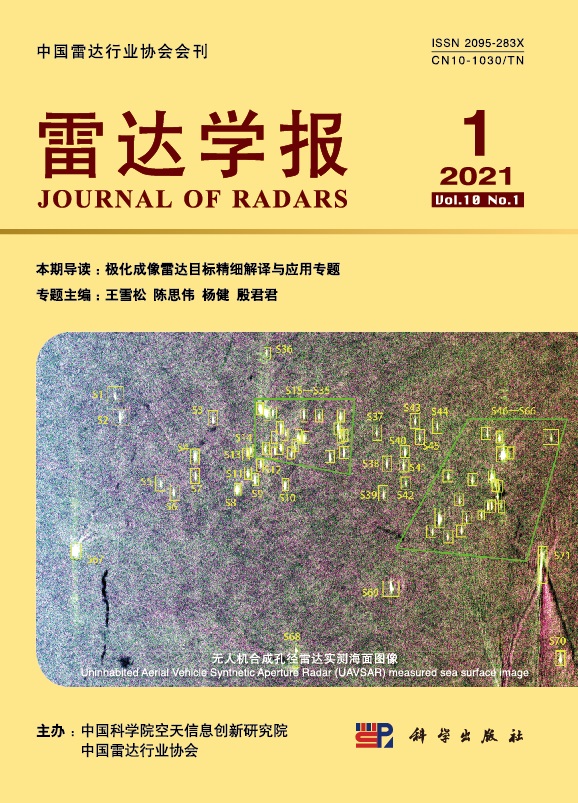





 DownLoad:
DownLoad:





